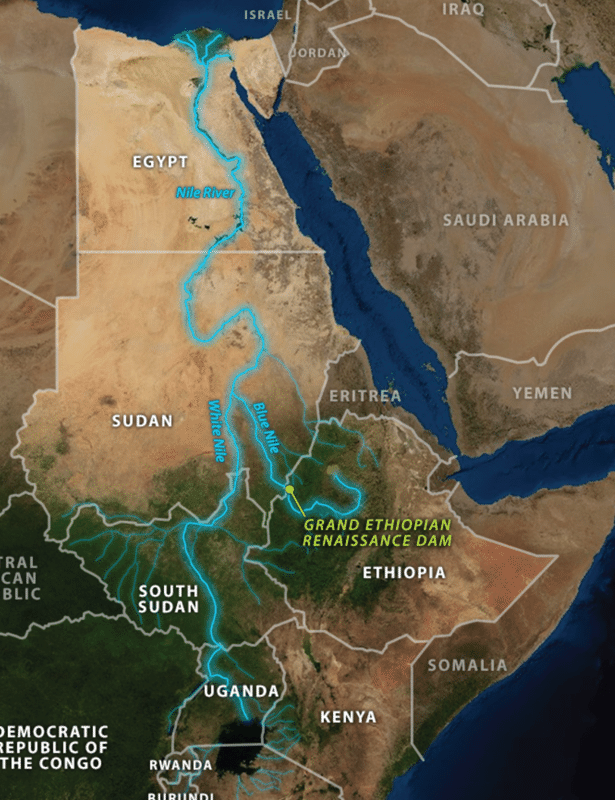On July 23, 1952, a group of army officers led by Mohammed Naguib and Gamal Abdel Nasser overthrew King Farouk in a coup that abolished the constitutional monarchy and established a republic. Nassar came to power during the height of the Cold War and his nonaligned policy received attention from both the U.S. and USSR. One of his major decisions was to reverse the decision to build a dam and reservoir outside Egypt. Since the early 1900s, the British discussed the construction of a reservoir on the Nile River to support Egypt’s water needs. Documents reveal that the British were convinced that it would be better if the dam were built either in Ethiopia or Sudan in order to minimize evaporation, a position justified by the British hydrologist Harold Edwin Hurst, who spent over 50 years observing the fluctuations of water levels in the Nile River (discussion on various feasibility studies done on the Nile River will be covered on part V of the book). Nasser and his followers argued that it was in Egypt’s national security interest that the dam should be built within Egypt regardless of expert opinion. After the dam was built, some few researchers described it as ‘The Wrong Dam in the Wrong Place.’ High levels of evaporation in the desert meant that up to 10% of the reservoir’s water evaporated every year.


Hi, this is a comment.
To get started with moderating, editing, and deleting comments, please visit the Comments screen in the dashboard.
Commenter avatars come from Gravatar.